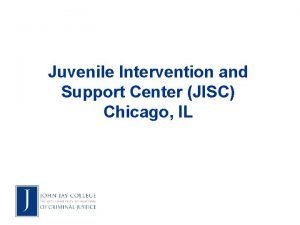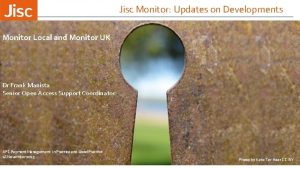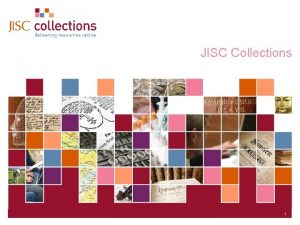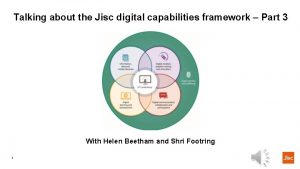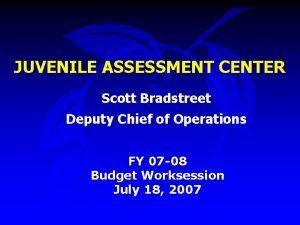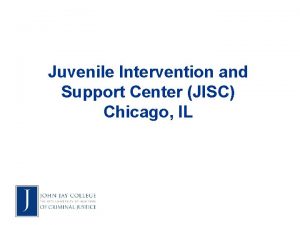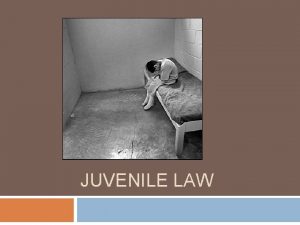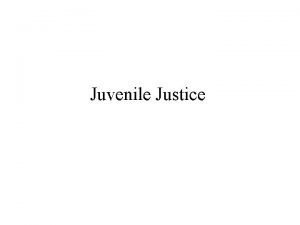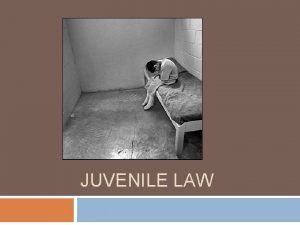Juvenile Intervention and Support Center JISC Chicago IL











- Slides: 11

Juvenile Intervention and Support Center (JISC) Chicago, IL

Process Evaluation of the JISC Jeffrey A. Butts (2011). Process Evaluation of the Chicago Juvenile Intervention and Support Center. New York, NY: Research and Evaluation Center, John Jay College of Juvenile Justice. Available at: www. jjay. cuny. edu/rec

Process Evaluation of the JISC • Opened in 2006 • Pre-court diversion program • Services and supports for “station adjusted” (informally handled) youthful offenders • Serves Chicago Police districts 2, 7, 8, 9, 10, and 21 (Chicago’s South Side) • Target area generated 8, 000 juvenile arrests annually, with 2, 000 appropriate for station adjustments

JISC Strategy and Philosophy • Chicago officials researched juvenile assessment centers and visited other programs • Intervention strategy based on: (1) early intervention (2) interagency service coordination (3) graduated sanctioning (4) community justice and problem-solving justice (5) restorative justice (6) positive youth development

JISC Strategy and Philosophy • Chicago officials researched juvenile assessment centers and visited other programs • Intervention strategy based on: (1) early intervention (2) interagency service coordination (3) graduated sanctioning (4) community justice and problem-solving justice (5) restorative justice (6) positive youth development Biggest Challenge

The JISC Saves Enough Police Work Time for Nearly 5 Full-Time CPD Officers 2 ½ hours Average time a CPD officer is “off the street” to process a juvenile arrest in areas of Chicago without a JISC program 45 minutes Average time an officer is “off the street” to process a juvenile arrest at the JISC 1 hour, 45 minutes Officer work time saved for each juvenile arrest processed at the JISC (i. e. , 2 ½ hours minus 45 minutes) 5, 600 arrests Annual number of juvenile arrests processed at the Chicago JISC (as of 2008) 9, 800 hours Estimated annual number of CPD officer work hours saved by processing juvenile arrests at the Chicago JISC (i. e. , 1 hour and 45 minutes multiplied by 5, 600) 2, 016 hours Annual work hours of a CPD officer (i. e. , 168 hours per month multiplied by 12) 4. 9 officers Estimated number of full-time officer positions potentially created by the availability of the JISC per year (i. e. , 9, 800 hours divided by 2, 016 hours) Note: Figures for “off-street” time were derived by asking working CPD officers to estimate the time required to process juvenile arrests in various police districts. These estimates were not verified by actual measurements.

Partnership Issues • Law enforcement and social services are just different worlds • Police culture favors command control, efficient case processing, and individual-level data • Social services are less-controlled, more turbulent, staff are poorly trained and compensated • Social services staff see part of their job as protecting clients from law enforcement, including data

Resource Issues • Resources available to youth not as comprehensive and diverse as intended (very little PYD) • Responsibility for intervention still rested with case management staff • Resources for youth constrained by funding, but also by limited vision of agency officials and staff • Interventions were largely from professional providers seeking contracts • Not enough volunteer-based neighborhood supports

Structure, Staffing, Governance • Organizational partners often held different views about mission, structure, and funding • Ongoing concerns about potential for unintended consequences, insufficient array of community-based resources, and data sharing • “Mixed messages” -- designed as diversion, yet the JISC process began at a police station • Security policies affected staff demeanor, preventing effective diversion-oriented culture

Evaluation Challenges • Evaluate “what is” or “what should be” ? ? • Establishing the counterfactual – “compared to what? ” • Collecting individual-level data, with long-term follow-up, while respecting the value of diversion • Getting law enforcement and social services to share data while they do not (and probably should not) share basic missions

Jeffrey A. Butts, Ph. D. Director, Research and Evaluation Center John Jay College of Criminal Justice 555 West 57 th Street, Suite 605 New York City, NY 10019 Tel: (212) 237 -8486 Email: jbutts@jjay. cuny. edu Office web: www. jjay. cuny. edu/rec Personal web: www. jeffreybutts. net
